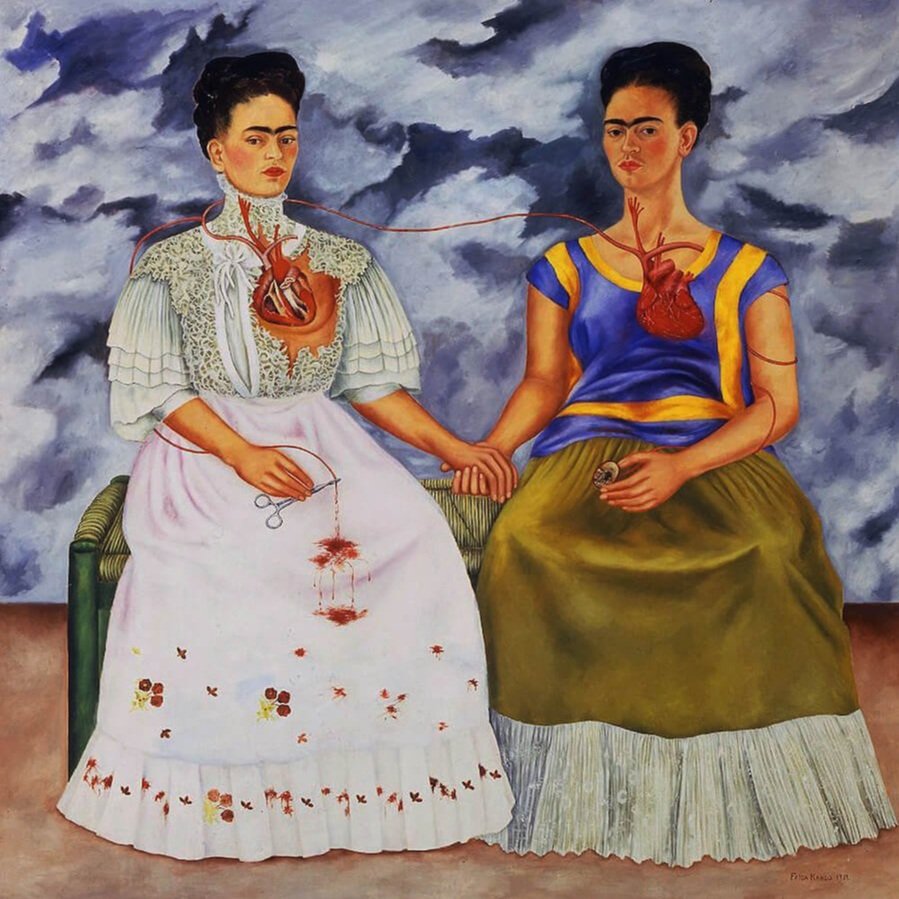The Dance of Opposites
The Dance of Opposites
Art as a Bridge Between Nature, Emotions, and Visual Elements
Opposites are part of how we make sense of the world by showing up in nature, in our emotions, and in the way we create.
For example:
In nature: Stinging nettles and dock leaves often grow side by side. One causes discomfort, the other soothes it. Together, they speak to the quiet wisdom of balance.
In our emotions: Joy and sorrow often arrive close together. Sometimes we laugh through tears or feel calm after a wave of grief. One emotion makes space for the other.
In creating art: We lean into contrast—warm and cool tones, soft edges beside sharp ones, stillness alongside movement. These opposites hold energy and depth.
Nature’s Quiet Lessons
Nature is full of these quiet teachings. Storms clear the air. Decay feeds new growth. A tree bends in the wind and roots itself deeper in the soil. These natural opposites are not at odds—they work together to create balance and resilience. In the same way, contrast in art holds space for what is unresolved, layered, and deeply human.
Stinging Nettle and Dock plants
Nature often speaks in pairs—pain and relief growing from the same soil.
The Role of Contrast in Art
Artists have long turned to contrast to explore what it means to be human. The tension between extremes can hold a kind of truth.
Similarly, Picasso’s Guernica is a work filled with devastation, grief, and unrest—and yet, near the center, a small flower appears. Gently held, almost easy to miss. But it’s there! A reminder that even in ruin, something tender can still survive.
Picasso’s “Guernica” 11′ 6″ x 25′ 6″ (1937) — a flower, gently held, in the midst of devastation.
The Opposites Within
Frida Kahlo’s The Two Fridas (1939) also speaks powerfully to emotional duality. She lays bare her inner world—two versions of herself, both connected and divided, both exposed. One Frida holds the pain, the open wound. The other, the steady pulse of love and survival.
The painting carries both grief and resilience without choosing one over the other. It reminds us that opposites aren’t just around us. They live within us. They shape how we love, how we endure, and how we make sense of being human.
The Two Fridas (1939)
Kahlo’s dual self, divided and connected, exposed and enduring.
The Beauty in Sorrow
We understand emotions through contrast—sadness gives meaning to happiness, just as death gives meaning to life.
It is through experiencing deep sorrow that we can truly appreciate the heights of joy. And by contemplating mortality, we are reminded to embrace life’s fleeting beauty and to cherish it all the more.
Susan Cain, in Bittersweet, explores the power of opposites through the story of Vedran Smailović, the cellist of Sarajevo. Amid the devastation of the Bosnian War in the 1990s, Smailović played Albinoni’s Adagio in the ruins of the city to honor the victims of a deadly bakery bombing. His hauntingly beautiful music became a symbol of resilience—a moment of grace in the midst of tragedy.
The Cellist of Sarajevo — a single voice, steady in the rubble.
Returning to the Studio
In both art and life, opposites work together to create balance. Just like a painter uses light and shadow to bring depth to a canvas, or a musician blends tension and release to shape a melody, contrast is what gives things meaning. Joy feels richer because we have known sorrow. Light shines brighter against the dark. It is this constant interplay of opposites that makes life—and art—so deeply moving.
Within each painting, I am balancing opposites: clarity and ambiguity, containment and openness, movement and stillness. A figure might feel grounded yet ghostlike. A shape might settle and then dissolve. These tensions are not problems to fix. They are the heartbeat of the work.
I do not rush to resolve what is unclear. I allow space—for what is seen, and for what is sensed. In that quiet unfolding, I feel most connected—to the painting, to myself, and to something beyond.
At work in the studio, where each brushstroke holds a bit of the past and the present.




